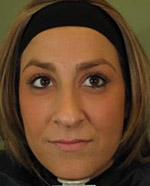Herpes
There are two types of herpes simplex virus: type 1 (HSV-1) and type 2 (HSV-2). Herpes simplex virus 1 leads to the development of small and usually painful blisters on the skin of the lips, mouth, gums, or lip area. These blisters are commonly called cold sores or fever blisters. Herpes simplex virus 2 (HSV2) is more commonly associated with genital herpes, although it can also infect non-genital areas.
What Causes Oral Herpes?
Oral herpes is an extremely common disease caused by infection of the mouth area with herpes simplex virus, most often type 1. Most Americans are infected with the type 1 virus by the age of 20.
The initial infection may cause no symptoms or mouth ulcers. The virus remains in the nerve tissue of the face. In some people, the virus reactivates and produces recurrent cold sores that are usually in the same area but are not serious.
Herpes viruses are contagious. Contact may occur directly, or through contact with infected razors, towels, dishes, and other shared articles. Occasionally, oral-to-genital contact may spread oral herpes to the genitals (and vice versa). For this reason, people with active herpes lesions on or around the mouths or on the genitals should avoid oral sex.
The first symptoms usually appear within 1 or 2 weeks—and as late as 3 weeks—after contact with an infected person. The lesions of oral herpes usually last for 7 to 10 days, then begin to resolve. The virus may become latent, residing in the nerve cells, with recurrence at or near the original site.
Recurring lesions are usually milder. They may be triggered by menstruation, sun exposure, fever, stress, or other unknown causes.
What Are the Symptoms of Oral Herpes?
Warning symptoms of itching, burning, increased sensitivity, or tingling sensation may occur about two days before lesions appear. Other symptoms include:
- Skin lesions or rash around the lips, mouth, and gums
- Small blisters filled with clear yellowish fluid
o Blisters on a raised, red, painful skin area
o Blisters that form, break, and ooze
o Yellow crusts that slough to reveal pink, healing skin
o Several smaller blisters that merge to form a larger blister - Mild fever, sore throat, and other flu-like symptoms
Do I Need Treatment for Oral Herpes?
Untreated, the symptoms will generally subside in 1 to 2 weeks. Antiviral medications given by mouth may shorten the course of the symptoms and decrease pain.
Sores caused by herpes often come back. Antiviral medicine works best if you take it when the virus is just starting to come back—before you see any sores. If the virus returns frequently, your doctor may recommend that you take medicine all the time.
Wash blisters gently with soap and water to minimize the spread of the virus to other areas of skin. An antiseptic soap may be recommended. Applying ice or warmth to the area may reduce pain.
Take precautions to avoid infecting others.
When Should I Contact a Medical Professional for Oral Herpes?
Call your health care provider in the following cases:
- Your symptoms persist for more than 1 or 2 weeks.
- Your symptoms seem severe.
- You have an immunosuppressive disorder and develop herpes symptoms.
How Can I Prevent Getting or Spreading Oral Herpes?
Avoid direct contact with cold sores or other herpes lesions. Minimize the risk of indirect spread by thoroughly washing items in hot (preferably boiling) water before re-use. Do not share personal items (such as towels or drinking glasses) with an infected person, especially when herpes lesions are active. Avoid precipitating causes (especially sun exposure) if you are prone to oral herpes.
Avoid performing oral sex when you have active herpes lesions on or near your mouth and avoid receiving oral sex from someone who has active oral or genital herpes lesions. Condoms reduce, but do not entirely eliminate, the risk of transmission via oral or genital sex.
Unfortunately, both oral and genital herpes viruses can sometimes be transmitted even when the person does not have active lesions.
Source: www.fromyourdoctor.com














